Hama-rikyu Garden was born as a typical feudal lord’s garden of the Edo Period (1603-1867). Drawing its water from Tokyo Bay, Shioiri-no-ike is Tokyo’s only seawater pond: it containds saltwater species such as striped mullet and goby, under constant observation by winter birds flying overhead.
There is a teahouse in the middle of the pond in the garden. Visitors can enjoy Japanese matcha tea and Japanese sweets in a tea-ceremony style.
Outline
Hamarikyu Gardens (浜離宮恩賜庭園 Hama-rikyū Onshi Teien) is a public park in Tokyo. Located at the mouth of the Sumida River.
The park is a 250,165 m² landscaped garden surrounding Shioiri Pond, the park itself surrounded by a seawater moat filled by Tokyo Bay. It was remodeled as a public garden park on the site of a villa of the Shogun Tokugawa family in the 17th century.
The Great Kanto Earthquake and World War II bombings caused a great deal of damage to a number of the buildings and trees and rendered the garden unrecognizable, but on November 3, 1945, the Imperial family gave the garden to the City of Tokyo and it became open to the public in April of 1946.
This garden is surrounded by a lot of modern buildings.
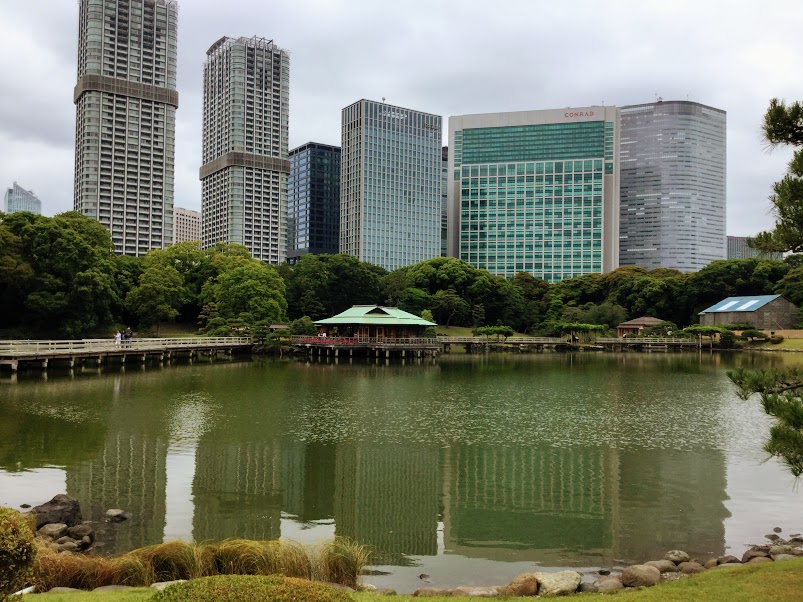
Sometimes newly-weds take photos wearing kimono.

View Point
Shioiri-no-ike (Shioiri Pond)
The water for the pond is drawn from the bay. This pond is the only remaining seawater pond within Tokyo. With the rise and fall of the tide, the sluice gate opens and shuts to regulate the water level. There are many different types of ocean water fish in the pond, including black mullet, sea bass, gobies and eels.

Nakajima-no-ochaya (Tea House)
From 1704, when this teahouse was first built, the Shoguns, and other elites such as Imperial Court nobles, who never tired of the relaxed atmosphere and the wonderful view of the place, used it continuously.
Visitors can also enjoy matcha (Japnese Green Tea) and Japanese sweets .
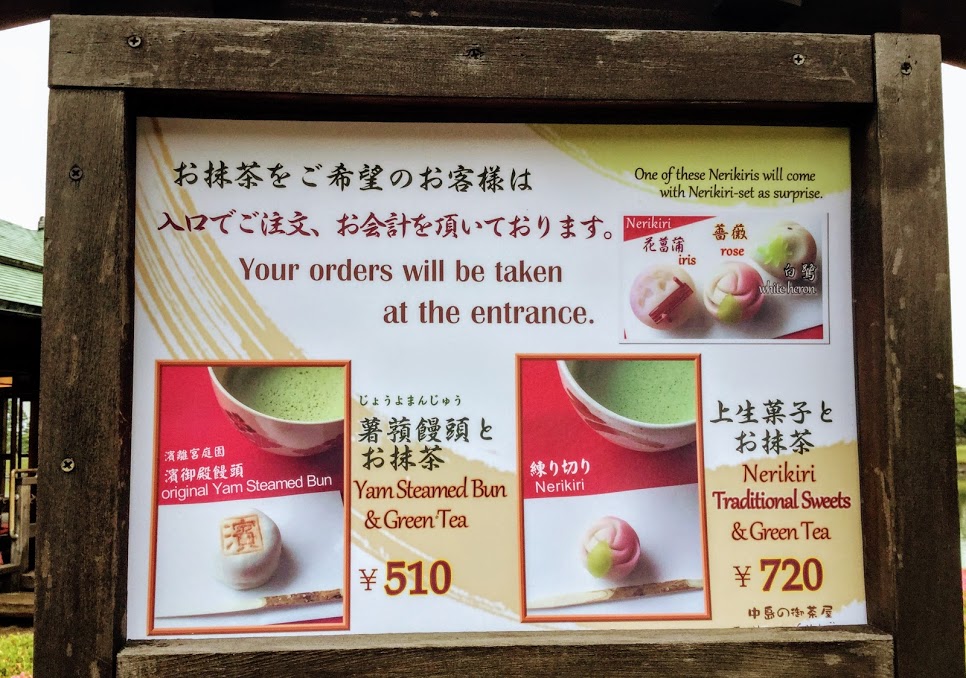
Sweets on the left side is Yam Steamed Bun, Sweets on the right side is Nerikiri(Japanese Traditional Sweets).
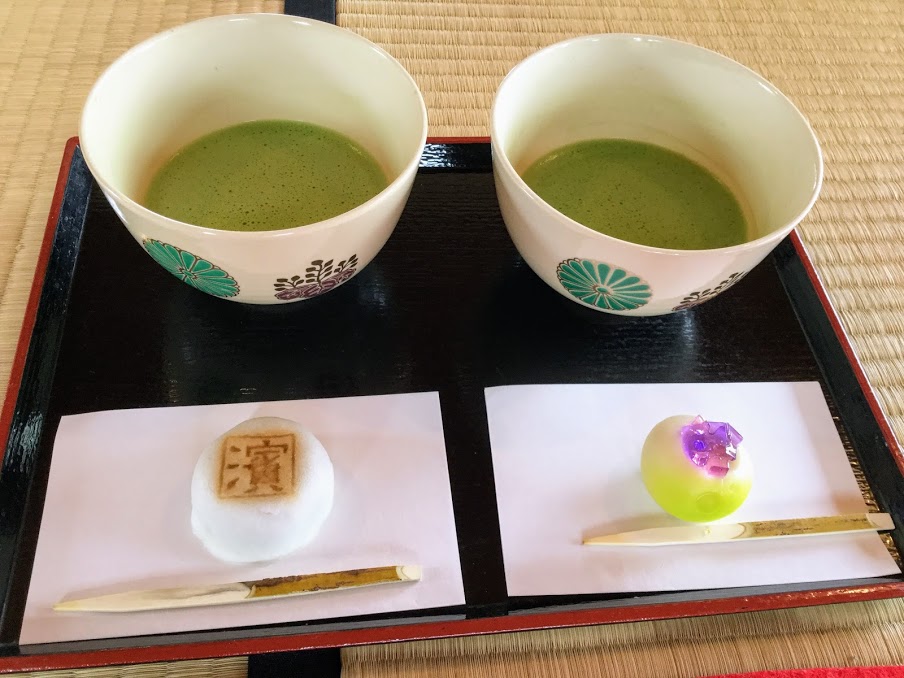
Inside the teahouse (tatami room)

You can enjoy the beautiful scenery from the tea house.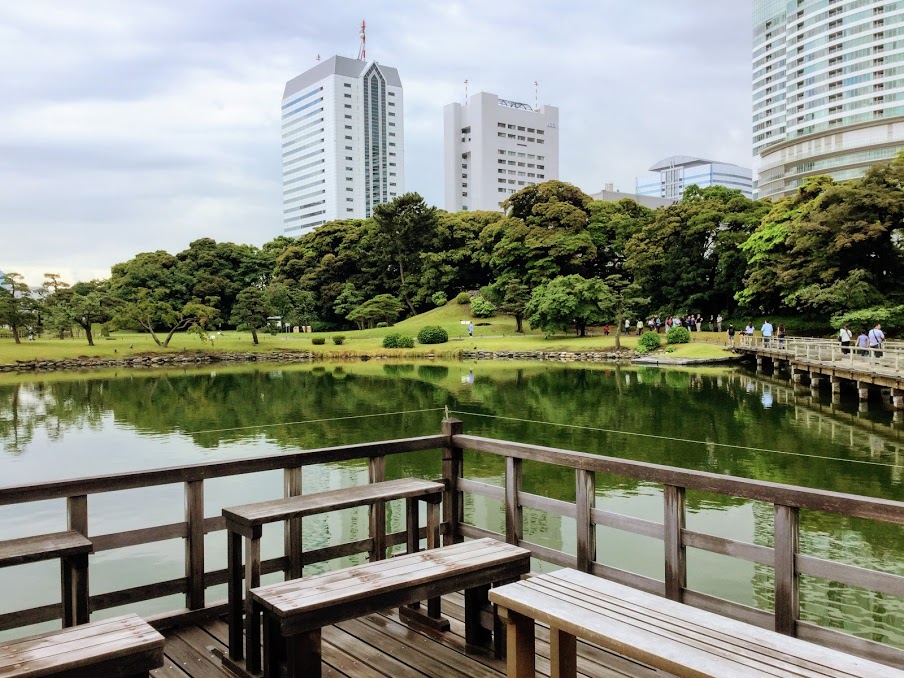
300-Year Pine
At the time when the 6th Shogun, Ienobu, renovated the garden, a large pine was planted to celebrate the renovation. It has survived to the present day.
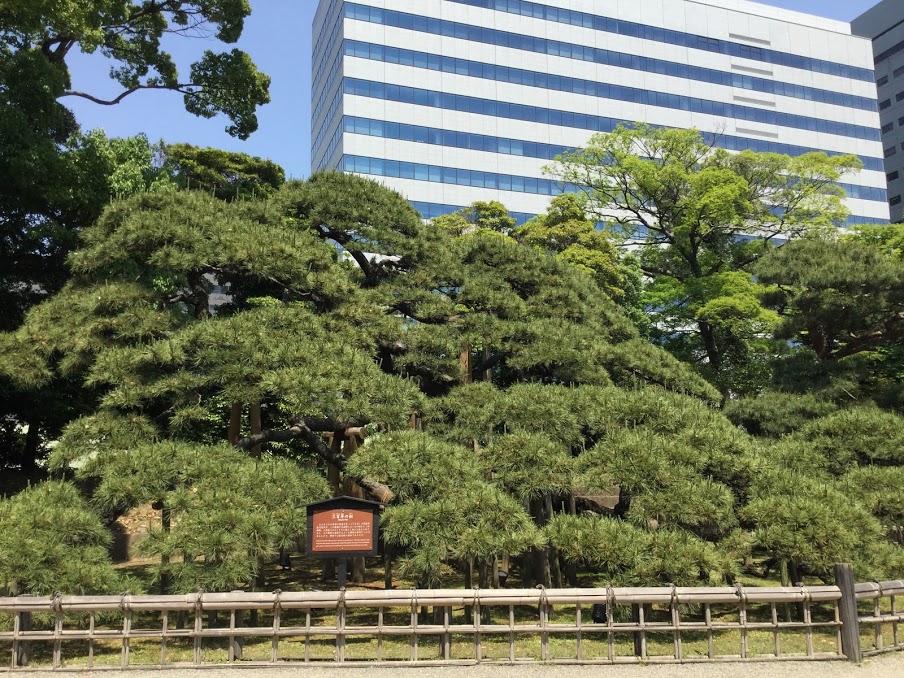
Kamoba(Duck hunting sites in the garden)
The kamoba areas feature many narrow watercourses built into the garden. Duck blinds were used to observe the ducks and feed them grain. When they came too close, they were caught using nets, which was a form of duck hunting.
The Peony Garden and the flower field
The Peony Garden comprises 1000 plants among which are 60 different types of peonies. In the spring they bloom with a great profusion of colors. In the flower field, rape flowers are also in blossom. The cosmos make for a colorful scene in the fall.
Access
Location
1-1, Hama Rikyu-teien, Chuo-ku, Tokyo 104-0046
Access
- Tsukijishijō Station (Toei Ōedo Line) – 7 minutes walk
- Shiodome Station (Toei Ōedo Line/Yurikamome Line) – 7 minutes walk
- Shimbashi Station (Toei Asakusa Line) – 12 minutes walk
- Tokyo Cruise Ship ( Water Bus) arrives at and departs from inside the park.
Inquiry
Hama-rikyu Garden Office Tel: 03-3541-0200
Official Website
Hama-rikyu Gardens (English)
Hours & Fees
- Hours: Open from 9:00 to 17:00 (Entry until 16:30)
- Closed: Year-end holidays (December 29 to January 1)
- Entrance fee: ¥300 (65 and over: ¥150)
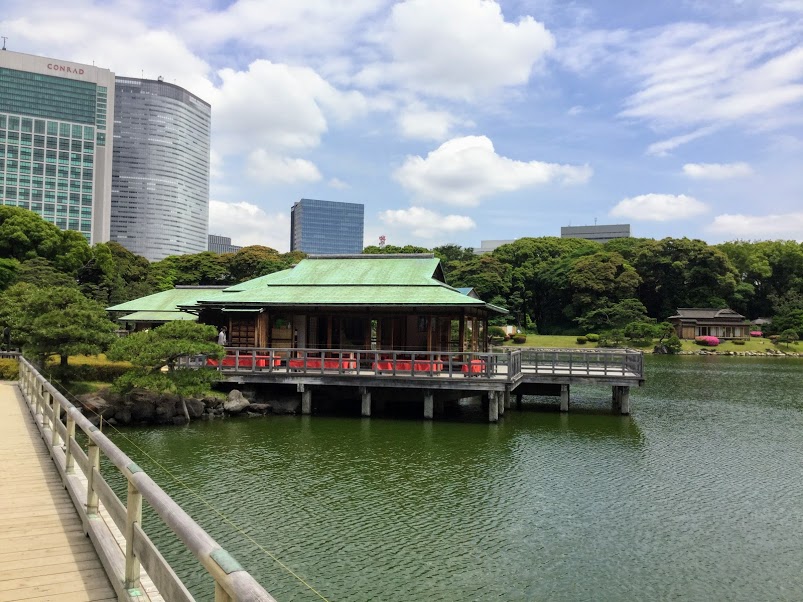
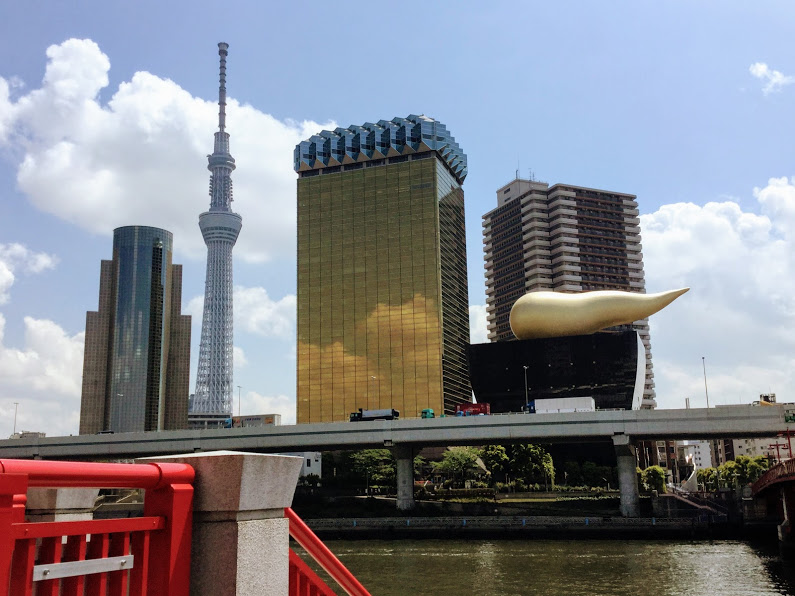
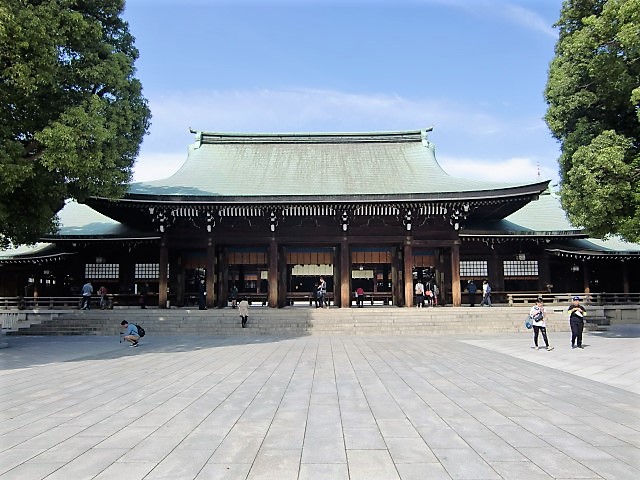
コメント